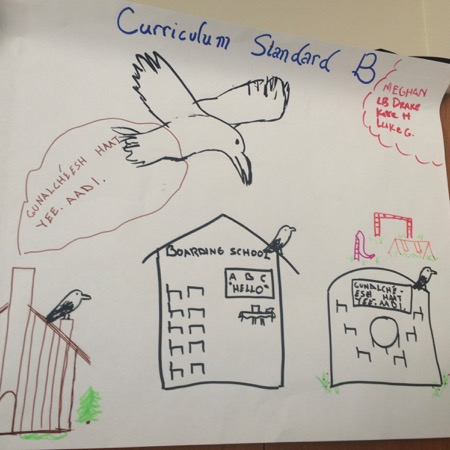This lesson encompasses Cultural Standard E. The standard says: A culturally-responsive curriculum situates local knowledge and actions in a global context. In my glacier lesson, I help bring awareness and relevance to Mendenhall glacier, which is a currently retreating glacier here. The discussion part starts with Mendenhall’s changes over time and what kind of rates the glacier has been retreating. This is followed with a video and lots of pictures. This discussion would lead into topics about climate change and how they have a direct impact on the local and global environment. It’s important that a take-home message includes how they can improve these condition in their community or across the world. This part of the lesson embodies 1. encourages students to consider the inter-relationship between their local circumstances and the global community.
It’s absolutely key that the students understand “think globally, act locally” during this lesson and discussion on climate change. The lesson has many references to Mendenhall, but only because it is a place-based lesson to help them realize what is going on in their backyard. Once they grasp the local concept, they can apply that information directly to the communities around the world.
The second part of this lesson is about understanding glacier mechanics. They will be exploring with a model how glaciers move and carve out much of SE Alaska and the features that are left on glaciated landforms. Their deeper knowledge of how glaciers influence landforms is applicable to the world (SE Alaska is not the only place with glaciated land). You can read more about the lesson plan on the link above. Glaciers are schweet.

